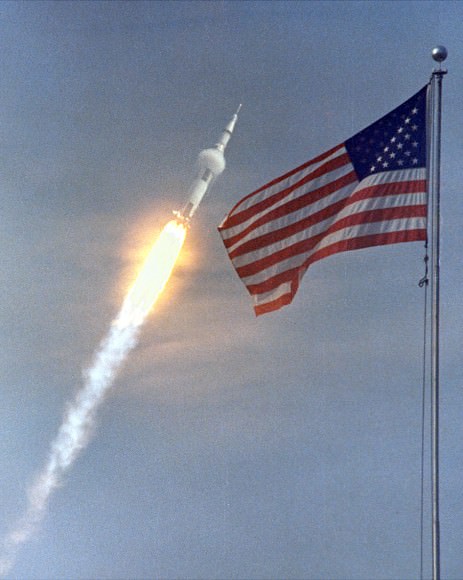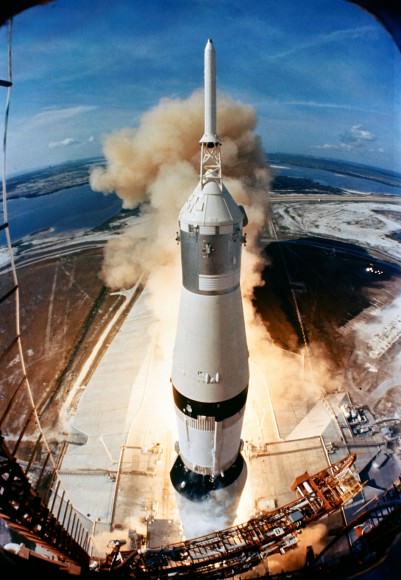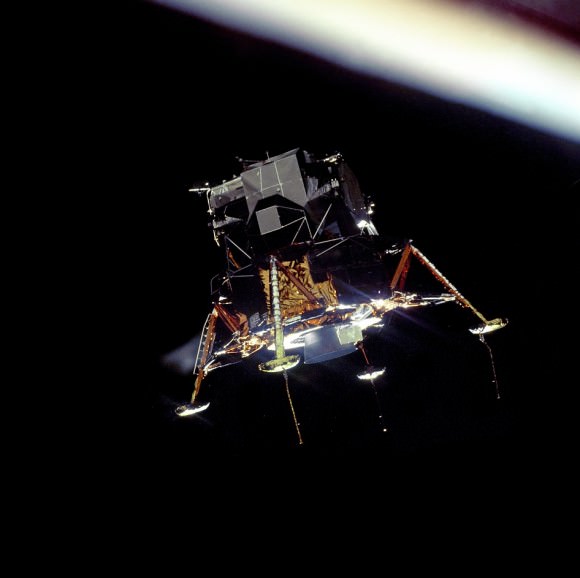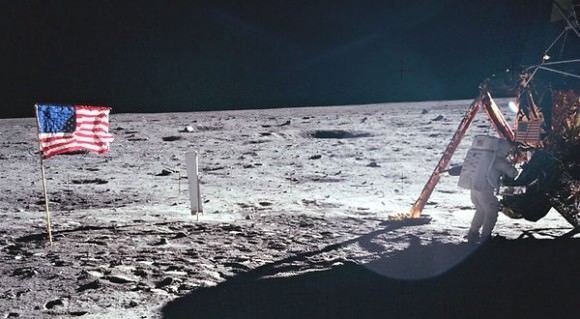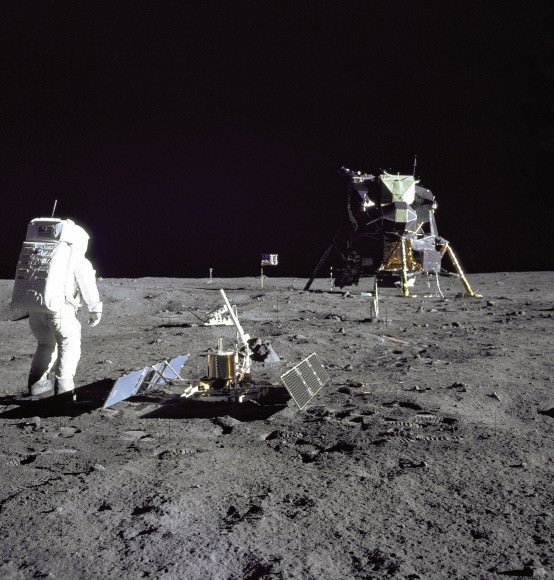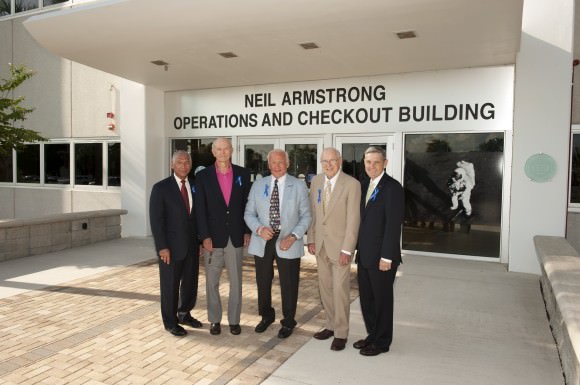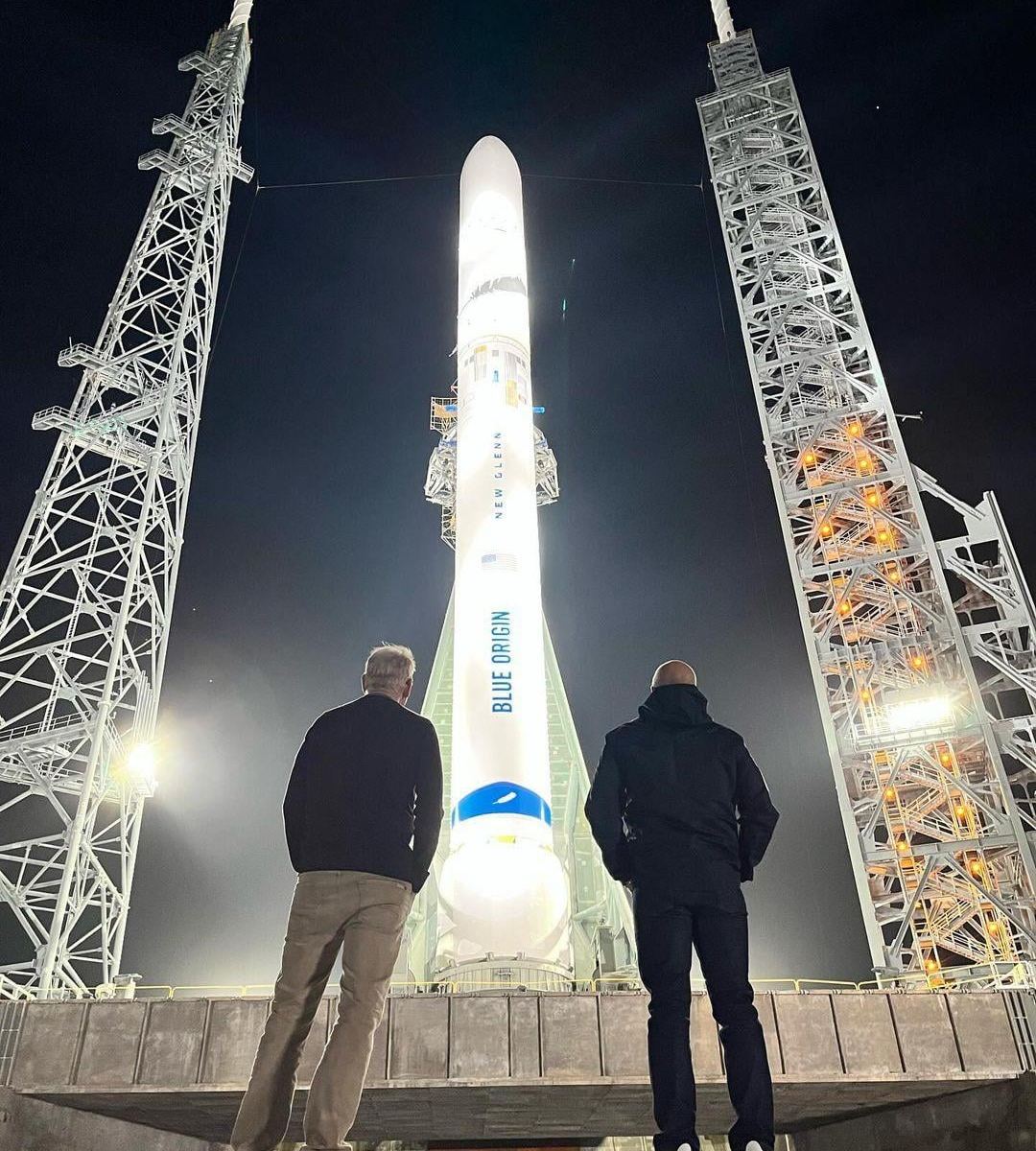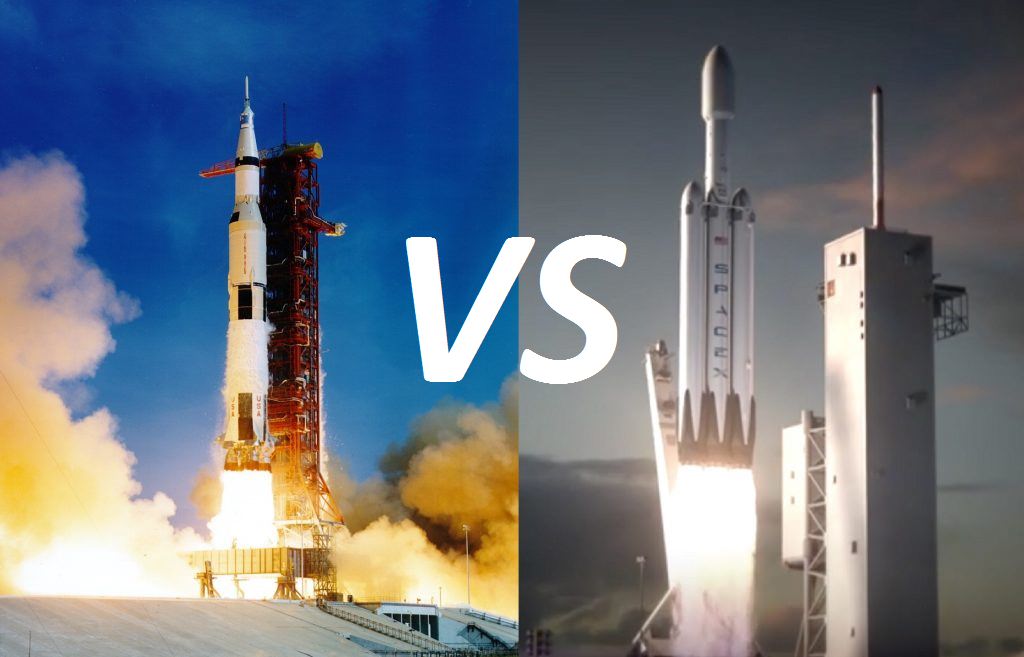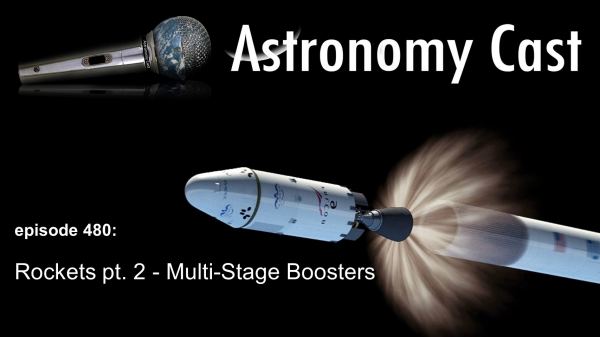If you think about space travel and the means of escaping the confines of the Earth then most people, currently, are likely to think about the new Artemis project and the Space Launch System. That’s not the only new development though, Blue Origin have been working on their New Glenn rocket and finally we have got a glimpse of their new offering. The rocket was finally rolled onto the launch pad at Cape Canaveral for testing to commence and we may even see a launch later this year.
Continue reading “Finally! Blue Origin’s New Glenn Goes Vertical on the Launch Pad”If Rockets were Transparent: Video Shows You How Rockets Use up Their Propellant
I always remember hearing the comparison of how the Space Shuttle’s main engines would drain an average family swimming pool in under 25 seconds. Or that the Saturn V used the equivalent of 763 elephants of fuel. But just how much fuel does a rocket burn during its ascent to orbit? As you might expect, the amount varies with different rockets.
A great new video provides an incredible visual of how much fuel is burned by four different rockets, from launch to the various stage separations by showing what rocket launches would look like if the rockets were completely transparent.
Continue reading “If Rockets were Transparent: Video Shows You How Rockets Use up Their Propellant”China is Working on a Rocket as Powerful as the Saturn V, Could Launch by 2030

In the past decade, China’s space program has advanced by leaps and bounds. In recent years, the Chinese National Space Agency (CNSA) has overseen the development of a modern rocket family (the Long March series), the deployment of a space station (Tiangong-1) and the development of the Chinese Lunar Exploration Program (CLEP) – otherwise known as the Chang’e Program.
Looking to the future, China plans to create new classes of heavy rockets in order to conduct more ambitious missions. These include the Long March 9 rocket (aka. the Changzheng 9), a three-stage, super-heavy rocket that would allow for crewed missions to the Moon. According to a recent story from Aviation Weekly, China hopes to conduct an engine demonstration of this rocket, and could do so as early as later this year.
This demonstration is part of a research effort intended to create engines for the first stage of the Long March 9. According to statements made by the Academy of Aerospace Propulsion Technology (AAPT) – part of the China Aerospace and Technology Corporation (CASC) and the one’s responsible for developing the hardware – these engines would be capable of delivering 3,500 to 4,000 metric tons (3,858 to 4,409 US tons) of thrust.

AAPT also indicated that work on a second-stage and third-stage engine – which would be capable of generating about 200 metric tons (440,000 lbs) and 25 metric tons (55,000 lbs) thrust, respectively – is also in progress. All told, this is roughly six times the thrust that China’s heaviest rocket (the Long March 5) can generate and would make it comparable to the Saturn V – the Apollo-era rocket that took the NASA astronauts to the Moon.
For starters, the Saturn V‘s engines delivered roughly 3,400 metric tons of thrust, and the rocket was capable of delivering 140 metric tons (310,000 lbs) to Low Earth Orbit (LEO) and about 48 metric tons (107,100 lbs) to a Lunar Transfer Orbit (LTO). By comparison, the Long March 9 will reportedly have the ability to 140 metric tons to LEO and at least 50 metric tons (110,000 lbs) to LTO.
According to Li Hong, the head of the China Academy of Launch Vehicle Technology (the CASC unit responsible for overall development and production of most Chinese space launchers), a massive turbopump has also been built for the main engine. A pump of this size is necessary, since the engine will generate four time the thrust of the largest Chinese rocket engine to date – AAPT’s YF-100, which generates 120 metric tons (265,000 lbs) of thrust.
While the full specifications of the rocket are not yet available, the China News Service has indicated that the rocket will measure 10 meters (33 ft.) in diameter. According to statements made by both Li and Lui, the first-stage engine will burn kerosene and achieve a thrust of 480 metric tons (529 US tons) – comparable to the Saturn V F-1 engine’s 680 metric tons (750 US tons) of thrust – while the second and third stage engines will likely burn hydrogen fuel.
At their current rate of progress, an engine demonstration could be taking place later this year. As AAPT President Liu Zhirang stated in an interview with Science and Technology Daily (part of the state-owned China News Service):
“A complete prototype for the engine in the 500-metric-ton class can be built and assembled this year… Because of the great parameter changes that come with rises in thrust, the current test and verification equipment cannot satisfy requirements [of the Moon rocket propulsion program]. We cannot always do 1:1 scale tests. As a result, only simulations and scaled-down tests can be done for some technology and hardware. This increases the degree of difficulty for the program.”
If successful, the Long March 9 will join the ranks of super heavy-lift launch vehicles, such as the SpaceX Falcon Heavy, the KRK rocket (currently under development in Russia), and the Space Launch System being developed by NASA. These and other rockets are being built for the purpose of bringing astronauts to the Moon, Mars, and even beyond in the coming decades.
Beyond a possible demonstration of the Long March 9′s engine technology, the CNSA has many other ambitious plans for 2018. These include a planned 35 launches involving the Long March series, fourteen of which will be carried out by the Long March-3A and six by the Long March-3C rockets. Most of these missions will involve the deployment of Beidou satellites, but will also include the launch of the Chang’e-4 lunar probe later this year.

This year is also when China hopes to conduct mission using its newest rocket – the Long March 5 – in preparation for China’s lunar probe and Mars probe missions. This year is also expected to see a lot of developments in the Long March 7 series, which is likely to become the main carrier when China begins construction of its new space station (Tiangong-2, which is scheduled for completion in 2022).
Between all of these developments, it is clear that the age of renewed space exploration is upon us. Whereas the Space Race was characterized by two superpowers competing for dominance and “getting their first”, the current one is defined by both competition and cooperation between multiple space agencies and lucrative partnerships between the public sector and private industry.
And while the specter of renewed competition by space powers has a tendency to make many people nervous (especially those who are concerned about military applications), it is a testament to how humanity is growing as a space-faring species. By the time 2050 rolls around, we may just see many flags being planted on the Moon and Mars, and not just Old Glory.
Further Reading: Aviation Week, Popular Mechanics, Chinese Academy of Sciences
Astronomy Cast Ep. 480: Rockets pt. 2 – Multi-stage Boosters
The vast majority of rockets are multi-staged affairs. Why is this? What makes this kind of rocket so successful? Today we look at the ins and outs of multi-stage rockets.
We usually record Astronomy Cast every Friday at 3:00 pm EST / 12:00 pm PST / 20:00 PM UTC. You can watch us live on AstronomyCast.com, or the AstronomyCast YouTube page.
Visit the Astronomy Cast Page to subscribe to the audio podcast!
If you would like to support Astronomy Cast, please visit our page at Patreon here – https://www.patreon.com/astronomycast. We greatly appreciate your support!
If you would like to join the Weekly Space Hangout Crew, visit their site here and sign up. They’re a great team who can help you join our online discussions!
The Mars Project! Von Braun’s Ideas for a Mars Mission. Collaboration with Vintage Space
Did you know that it’s been almost 45 years since humans walked on the surface of the Moon? Of course you do. Anyone who loves space exploration obsesses about the last Apollo landings, and counts the passing years of sadness.
Sure, SpaceX, Blue Origins and the new NASA Space Launch Systems rocket offer a tantalizing future in space. But 45 years. Ouch, so much lost time.
What would happen if we could go back in time? What amazing and insane plans did NASA have to continue exploring the Solar System? What alternative future could we have now, 45 years later?
In order to answer this question, I’ve teamed up with my space historian friend, Amy Shira Teitel, who runs the Vintage Space blog and YouTube Channel. We’ve decided to look at two groups of missions that never happened.
In her part, Amy talks about the Apollo Applications Program; NASA’s original plans before the human exploration of the Moon was shut down. More Apollo missions, the beginnings of a lunar base, and even a human flyby of Venus.
In my half of the series, I look at Werner Von Braun’s insanely ambitious plans to send a human mission to Mars. Put it together with Amy’s episode and you can imagine a space exploration future with all the ambition of the Kerbal Space Program.
Keep mind here that we’re not going to constrain ourselves with the pesky laws of physics, and the reality of finances. These ideas were cool, and considered by NASA engineers, but they weren’t necessarily the best ideas, or even feasible.
So, 2 parts, tackle them in any order you like. My part begins right now.
Werner Von Braun, of course, was the architect for NASA’s human spaceflight efforts during the space race. It was under Von Braun’s guidance that NASA developed the various flight hardware for the Mercury, Gemini and Apollo missions including the massive Saturn V rocket, which eventually put a human crew of astronauts on the Moon and safely returned them back to Earth.
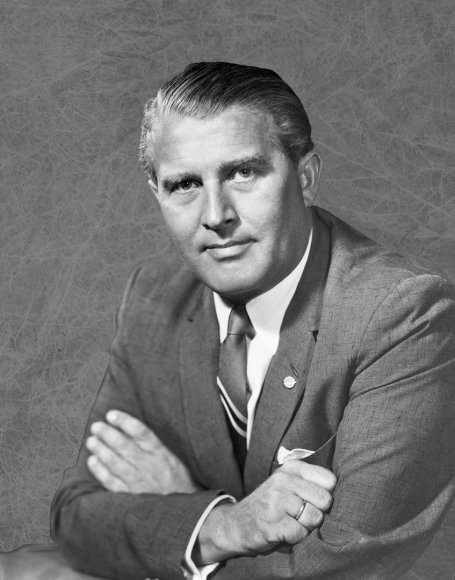
Von Braun was originally a German rocket scientist, pivotal to the Nazi “rocket team”, which developed the ballistic V-2 rockets. These unmanned rockets could carry a 1-tonne payload 800 kilometers away. They were developed in 1942, and by 1944 they were being used in war against Allied targets.
By the end of the war, Von Braun coordinated his surrender to the Allies as well as 500 of his engineers, including their equipment and plans for future rockets. In “Operation Paperclip”, the German scientists were captured and transferred to the White Sands Proving Ground in New Mexico, where they would begin working on the US rocket efforts.
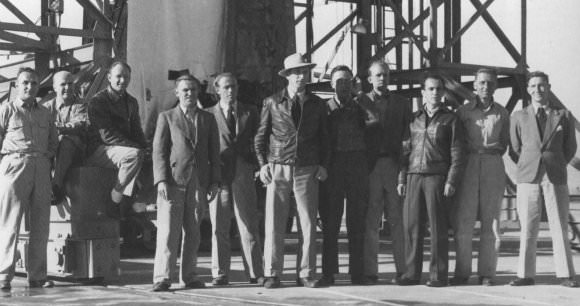
Before the work really took off, though, Von Braun had a couple of years of relative downtime, and in 1947 and 1948, he wrote a science fiction novel about the human exploration of Mars.
The novel itself was never published, because it was terrible, but it also contained a detailed appendix containing all the calculations, mission parameters, hardware designs to carry out this mission to Mars.
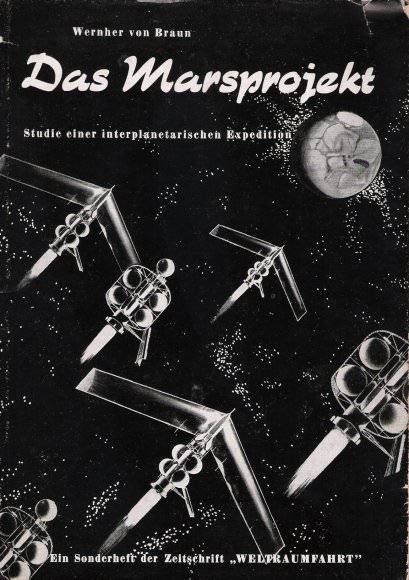
In 1952, this appendix was published in Germany as “Das Marsproject”, or “The Mars Project”. And an English version was published a few years later. Collier’s Weekly Magazine did an 8-part special on the Mars Project in 1952, captivating the world’s imagination.
Here’s the plan: In the Mars Project, Von Braun envisioned a vast armada of spaceships that would make the journey from Earth to Mars. They would send a total of 10 giant spaceships, each of which would weigh about 4,000 tonnes.
Just for comparison, a fully loaded Saturn V rocket could carry about 140 tonnes of payload into Low Earth Orbit. In other words, they’d need a LOT of rockets. Von Braun estimated that 950 three-stage rockets should be enough to get everything into orbit.
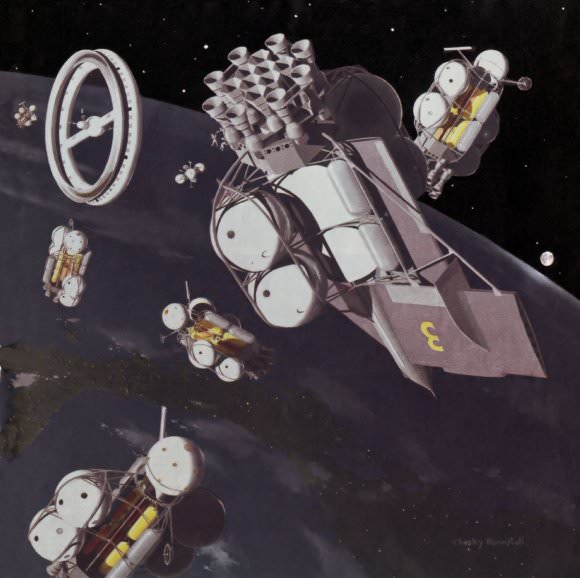
All the ships would be assembled in orbit, and 70 crewmembers would take to their stations for an epic journey. They’d blast their rockets and carry out a Mars Hohmann transfer, which would take them 8 months to make the journey from Earth to Mars.
The flotilla consisted of 7 orbiters, huge spheres that would travel to Mars, go into orbit and then return back to Earth. It also consisted of 3 glider landers, which would enter the Martian atmosphere and stay on Mars.
Once they reached the Red Planet, they would use powerful telescopes to scan the Martian landscape and search for safe and scientifically interesting landing spots. The first landing would happen at one of the planet’s polar caps, which Von Braun figured was the only guaranteed flat surface for a landing.
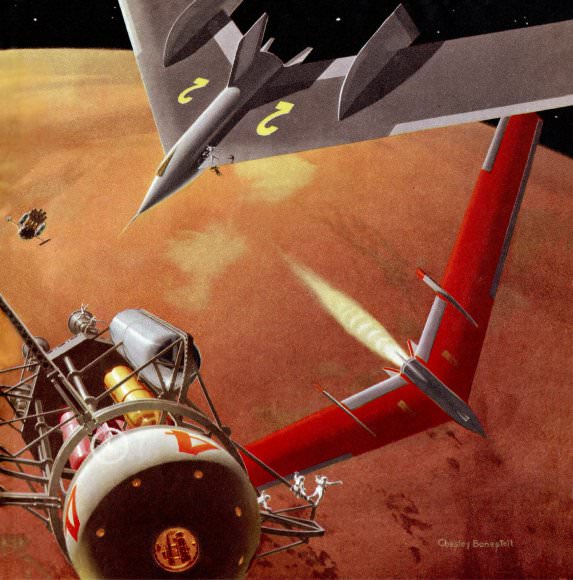
At this point, it’s important to note that Von Braun assumed that the Martian atmosphere was about as thick as Earth’s. He figured you could use huge winged gliders to aerobrake into the atmosphere and land safely on the surface.
He was wrong. The atmosphere on Mars is actually only 1% as thick as Earth’s, and these gliders would never work. Newer missions, like SpaceX’s Red Dragon and Interplanetary Transport Ship will use rockets to make a powered landing.
I think if Von Braun knew this, he could have modified his plans to still make the whole thing work.
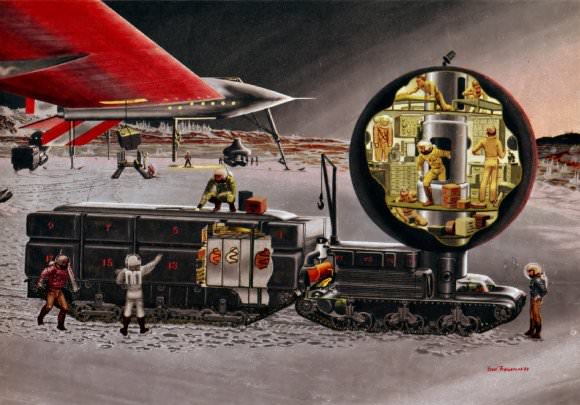
Once the first expedition landed at one of the polar caps, they’d make a 6,400 kilometer journey across the harsh Martian landscape to the first base camp location, and build a landing strip. Then two more gliders would detach from the flotilla and bring the majority of the explorers to the base camp. A skeleton crew would remain in orbit.
Once again, I think it’s important to note that Von Braun didn’t truly understand how awful the surface of Mars really is. The almost non-existent atmosphere and extreme cold would require much more sophisticated gear than he had planned for. But still, you’ve got to admire his ambition.
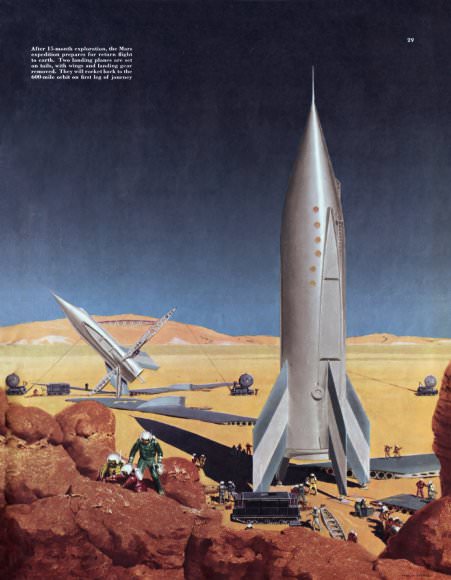
With the Mars explorer team on the ground, their first task was to turn their glider-landers into rockets again. They would stand them up and get them prepped to blast off from the surface of Mars when their mission was over.
The Martian explorers would set up an inflatable habitat, and then spend the next 400 days surveying the area. Geologists would investigate the landscape, studying the composition of the rocks. Botanists would study the hardy Martian plant life, and seeing what kinds of Earth plants would grow.
Zoologists would study the local animals, and help figure out what was dangerous and what was safe to eat. Archeologists would search the region for evidence of ancient Martian civilizations, and study the vast canal network seen from Earth by astronomers. Perhaps they’d even meet the hardy Martians that built those canals, struggling to survive to this day.
Once again, in the 1940s, we thought Mars would be like the Earth, just more of a desert. There’d be plants and animals, and maybe even people adapted to the hardy environment. With our modern knowledge, this sounds quaint today. The most brutal desert on Earth is a paradise compared to the nicest place on Mars. Von Braun did the best he could with the best science of the time.
Finally, at the end of their 400 days on Mars, the astronauts would blast off from the surface of Mars, meet up with the orbiting crew, and the entire flotilla would make the return journey to Earth using the minimum-fuel Mars-Earth transfer trajectory.
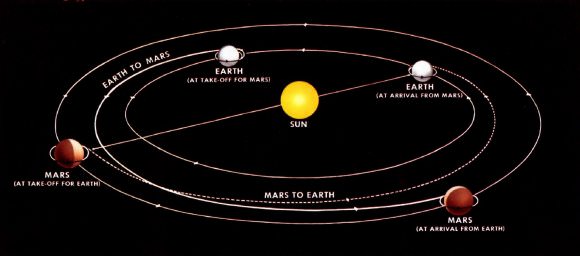
Although Von Braun got a lot of things wrong about his Martian mission plan, such as the thickness of the atmosphere and habitability of Mars, he got a lot of things right.
He anticipated a mission plan that required the least amount of fuel, by assembling pieces in orbit, using the Hohmann transfer trajectory, exploring Mars for 400 days to match up Earth and Mars orbits. He developed the concept of using orbiters, detachable landing craft and ascent vehicles, used by the Apollo Moon missions.
The missions never happened, obviously, but Von Braun’s ideas served as the backbone for all future human Mars mission plans.
I’d like to give a massive thanks to the space historian David S.F. Portree. He wrote an amazing book called Humans to Mars, which details 50 years of NASA plans to send humans to the Red Planet, including a fantastic synopsis of the Mars Project.
I asked David about how Von Braun’s ideas influenced human spaceflight, he said it was his…
“… reliance on a conjunction-class long-stay mission lasting 400 days. That was gutsy – in the 1960s, NASA and contractor planners generally stuck with opposition-class short-stay missions. In recent years we’ve seen more emphasis on the conjunction-class mission mode, sometimes with a relatively short period on Mars but lots of time in orbit, other times with almost the whole mission spent on the surface.”
Falcon Heavy Vs. Saturn V
Its an Epic Rocket Battle! Or a Clash of the Titans, if you will. Except that in this case, the titans are the two of the heaviest rockets the world has ever seen. And the contenders couldn’t be better matched. On one side, we have the heaviest rocket to come out of the US during the Space Race, and the one that delivered the Apollo astronauts to the Moon. On the other, we have the heaviest rocket created by the NewSpace industry, and which promises to deliver astronauts to Mars.
And in many respects, the Falcon Heavy is considered to be the successor of the Saturn V. Ever since the latter was retired in 1973, the United States has effectively been without a super-heavy lifter. And with the Space Launch System still in development, the Falcon Heavy is likely to become the workhorse of both private space corporations and space agencies in the coming years.
So let’s compare these two rockets, taking into account their capabilities, specifications, and the history of their development and see who comes out on top. BEGIN!

Development History:
The development of the Saturn V began in 1946 with Operation Paperclip, a US government program which led to the recruitment of Wernher von Braun and several other World War II-era German rocket scientists and technicians. The purpose of this program was to leverage the expertise of these scientists to give the US an edge in the Cold War through the development of intercontinental ballistic missiles (ICBMs).
Between 1945 and the mid-to-late 50s von Braun acted as an advisor to US armed forces for the sake of developing military rockets only. It was not until 1957, with the Soviet launch of Sputnik-1 using an R-7 rocket – a Soviet ICBM also capable of delivering thermonuclear warheads – that the US government began to consider the use of rockets for space exploration.
Thereafter, von Braun and his team began developing the Jupiter series of rockets – a modified Redstone ballistic missile with two solid-propellant upper stages. These proved to be a major step towards the Saturn V, hence why the Jupiter series was later nicknamed “an infant Saturn”. Between 1960 and 1962, the Marshall Space Flight Center began designing the rockets that would eventually be used by the Apollo Program.
After several iterations, the Saturn C-5 design (later named the Saturn V) was created. By 1964, it was selected for NASA’s Apollo Program as the rocket that would conduct a Lunar Orbit Rendezvous (LRO). This plan called for a large rocket to launch a single spacecraft to the Moon, but only a small part of that spacecraft (the Lunar Module) would actually land on the surface. That smaller module would then rendezvous with the main spacecraft – the Command/Service Module (CSM) – in lunar orbit and the crew would return home.
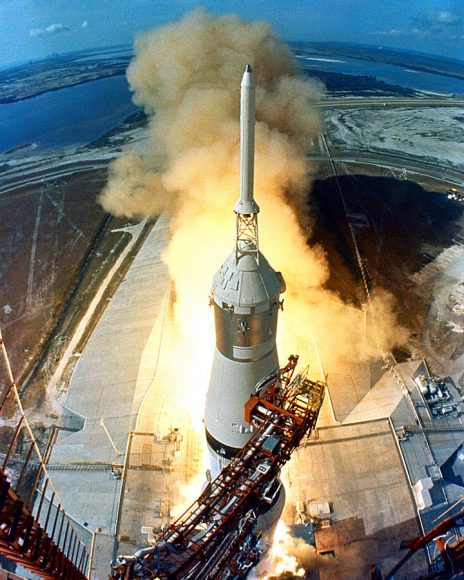
Development of the Falcon Heavy was first announced in 2011 at the National Press Club in Washington D.C. In a statement, Musk drew direct comparisons to the Saturn V, claiming that the Falcon Heavy would deliver “more payload to orbit or escape velocity than any vehicle in history, apart from the Saturn V moon rocket, which was decommissioned after the Apollo program.”
Consistent with this promise of a “super heavy-lift” vehicle, SpaceX’s original specifications indicated a projected payload of 53,000 kg (117,000 lbs) to Low-Earth Orbit (LEO), and 12,000 kgg (26,000 lbs) to Geosynchronous Transfer Orbit (GTO). In 2013, these estimates were revised to 54,400 kg (119,900 lb) to LEO and 22,200 kg (48,900 lb) to GTO, as well as 16,000 kilograms (35,000 lb) to translunar trajectory, and 13,600 kilograms (31,000 lb) on a trans-Martian orbit to Mars, and 2,900 kg (6,400 lb) to Pluto.
In 2015, the design was changed – alongside changes to the Falcon 9 v.1.1 – to take advantage of the new Merlin 1D engine and changes to the propellant tanks. The original timetable, proposed in 2011, put the rocket’s arrival at SpaceX’s west-coast launch location – Vandenberg Air Force Base in California – at before the end of 2012.
The first launch from Vandenberg was take place in 2013, while the first launch from Cape Canaveral was to take place in late 2013 or 2014. But by mid-2015, delays caused by failures with Falcon 9 test flights caused the first launch to be pushed to late 2016. The rocket has also been relocated to the Kennedy Space Center Launch Complex in Florida.
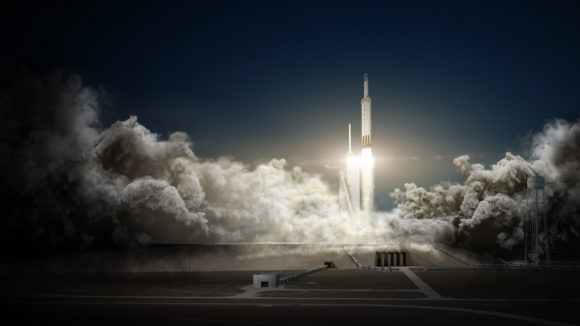
SpaceX also announced in July 0f 2016 that it planned to expand its landing facility near Cape Canaveral to take advantage of the reusable technology. With three landing pads now planned (instead of one on land and a drone barge at sea), they hope to be able to recover all of the spent boosters that will be used for the launch of a Falcon Heavy.
Design:
Both the Saturn V and Falcon Heavy were created to do some serious heavy lifting. Little wonder, since both were created for the sole purpose of “slipping the surly bonds” of Earth and putting human beings and cargo onto other celestial bodies. For its part, the Saturn V‘s size and payload surpassed all other previous rockets, reflecting its purpose of sending astronauts to the Moon.
With the Apollo spacecraft on top, it stood 111 meters (363 feet) tall and was 10 meters (33 feet) in diameter, without fins. Fully fueled, the Saturn V weighed 2,950 metric tons (6.5 million pounds), and had a payload capacity estimated at 118,000 kg (261,000 lbs) to LEO, but was designed for the purpose of sending 41,000 kg (90,000 lbs) to Trans Lunar Insertion (TLI).
Later upgrades on the final three missions boosted that capacity to 140,000 kg (310,000 lbs) to LEO and 48,600 kg (107,100 lbs) to the Moon. The Saturn V was principally designed by NASA’s Marshall Space Flight Center in Huntsville, Alabama, while numerous subsystems were developed by subcontractors. This included the engines, which were designed by Rocketdyne, a Los Angeles-based rocket company.

The first stage (aka. S-IC) measured 42 m (138 feet) tall and 10 m (33 feet) in diameter, and had a dry weight of 131 metric tons (289,000 lbs) and a total weight of over 2300 metric tons (5.1 million lbs) when fully fueled. It was powered by five Rocketdyne F-1 engines arrayed in a quincunx (four units arranged in a square, and the fifth in the center) which provided it with 34,000 kN (7.6 million pounds-force) of thrust.
The Saturn V consisted of three stages – the S-IC first stage, S-II second stage and the S-IVB third stage – and the instrument unit. The first stage used Rocket Propellant-1 (RP-1), a form of kerosene similar to jet fuel, while the second and third stages relied on liquid hydrogen for fuel. The second and third stage also used solid-propellant rockets to separate during launch.
The Falcon Heavy is based around a core that is a single Falcon 9 with two additional Falcon 9 first stages acting as boosters. While similar in concept to the Delta IV Heavy launcher and proposals for the Atlas V HLV and Russian Angara A5V, the Falcon Heavy was specifically designed to exceed all current designs in terms of operational flexibility and payload. As with other SpaceX rockets, it was also designed to incorporate reusability.
The rocket relies on two stages, with the possibility of more to come, that measure 70 m (229.6 ft) in height and 12.2 m (39.9 ft) in width. The first stage is powered by three Falcon 9 cores, each of which is equipped with nine Merlin 1D engines. These are arranged in a circular fashion with eight around the outside and one in th middle (what SpaceX refers to as the Octaweb) in order to streamline the manufacturing process. Each core also includes four extensible landing legs and grid fins to control descent and conduct landings.
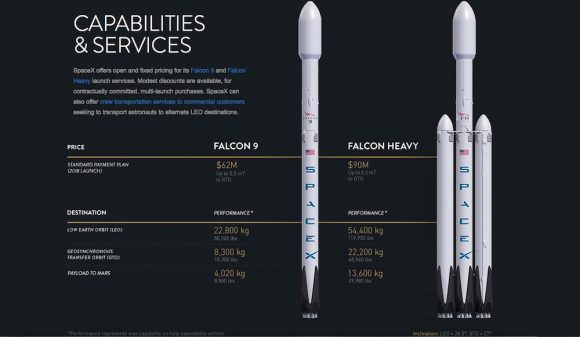
The first stage of the Falcon Heavy relies on Subcooled LOX (liquid oxygen) and chilled RP-1 fuel; while the upper stage also uses them, but under normal conditions. The Falcon Heavy has a total sea-level thrust at liftoff of 22,819 kN (5,130,000 lbf) which rises to 24,681 kN (5,549,000 lbf) as the craft climbs out of the atmosphere. The upper stage is powered by a single Merlin 1D engine which has a thrust of 34 kN (210,000 lbf) and has been modified for use in a vacuum.
Although not a part of the initial Falcon Heavy design, SpaceX has been extending its work with reusable rocket systems to ensure that the boosters and core stage can be recovered. Currently, no work has been announced on making the upper stages recoverable as well, but recent successes recovering the first stages of the Falcon 9 may indicate a possible change down the road.
The consequence of adding reusable technology will mean that the Falcon Heavy will have a reduced payload to GTO. However, it will also mean that it will be able to fly at a much lower cost per launch. With full reusability on all three booster cores, the GTO payload will be approximately 7,000 kg (15,000 lb). If only the two outside cores are reusable while the center is expendable, the GTO payload would be approximately 14,000 kg (31,000 lb).
Cost:
The Saturn V rocket was by no means a small investment. In fact, one of the main reasons for the cancellation of the last three Apollo flights was the sheer cost of producing the rockets and financing the launches. Between 1964 and 1973, a grand total of $6.417 billion USD was appropriated for the sake of research, development, and flights.
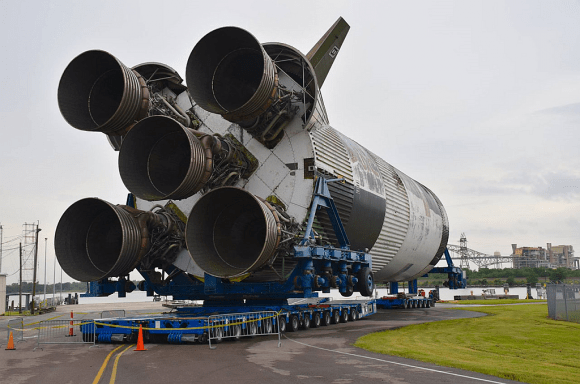
Adjusted to 2016 dollars, that works out to $41.4 billion USD. In terms of individual launches, the Saturn V would cost between $185 and $189 million USD, of which $110 million was spent on production alone. Adjusted for inflation, this works out to approximately $1.23 billion per launch, of which $710 million went towards production.
By contrast, when Musk appeared before the US Senate Committee on Commerce, Science and Transportation in May 2004, he stated that his ultimate goal with the development of SpaceX was to bring the total cost per launch down to $1,100 per kg ($500/pound). As of April 2016, SpaceX has indicated that a Falcon Heavy could lift 2268 kg (8000 lbs) to GTO for a cost of $90 million a launch – which works out to $3968.25 per kg ($1125 per pound).
No estimates are available yet on how a fully-reusable Falcon Heavy will further reduce the cost of individual launches. And again, it will vary depending on whether or not the boosters and the core, or just the external boosters are recoverable. Making the upper stage recoverable as well will lead to a further drop in costs, but will also likely impact performance.
Specifications:
So having covered their backgrounds, designs and overall cost, let’s move on to a side-by-side comparison of these two bad boys. Let’s see how they stack up, pound for pound, when all things are considered – including height, weight, lift payload, and thrust.
| Saturn V: | Falcon Heavy: | |
| Height: | 110.6 m (363 ft) | 70 m (230 ft) |
| Diameter: | 10.1 m (33 ft) | 12.2 m (40 ft) |
| Weight: | 2,970,000 kg (6,540,000 lbs) |
1,420,788 kg (3,132,301 lb) |
| Stages: | 3 | 2+ |
| Engines (1st Stage): |
5 Rocketdyne F-1 | 3 x 9 Merlin 1D |
| 2nd stage | 5 Rocketdyne J-2 | 1 Merlin 1D |
| 3rd stage | 1 Rocketdyne J-2 | |
| Thrust (1st stage): |
34,020 kN |
22,918 kN (sea level); |
| 2nd stage | 4,400 kN | 934 kN |
| 3rd stage | 1,000 kN | |
| Payload (LEO): | 140,000 kg (310,000 lbs) |
54,400 kg (119,900 lbs) |
| Payload (TLI): | 48,600 kg (107,100 lbs) |
16,000 kg |
When put next to each other, you can see that the Saturn V has the advantage when it comes to muscle. It’s bigger, heavier, and can deliver a bigger payload to space. On the other hand, the Falcon Heavy is smaller, lighter, and a lot cheaper. Whereas the Saturn V can put a heavier payload into orbit, or send it on to another celestial body, the Falcon Heavy could perform several missions for every one mounted by its competitor.
But whereas the contributions of the venerable Saturn V cannot be denied, the Falcon Heavy has yet to demonstrate its true worth to space exploration. In many ways, its like comparing a retired champion to an up-and-comer who, despite showing lots of promise and getting all the headlines, has yet to win a single bout.
But should the Falcon Heavy prove successful, it will likely be recognized as the natural successor to the Saturn V. Ever since the latter was retired in 1973, NASA has been without a rocket with which to mount long-range crewed missions. And while heavy-lift options have been available – such as the Delta IV Heavy and Atlas V – none have had the performance, payload capacity, or the affordability that the new era of space exploration needs.
In truth, this battle will take several years to unfold. Only after the Falcon Heavy is rigorously tested and SpaceX manages to deliver on their promises of cheaper space launches, a return to the Moon and a mission to Mars (or fail to, for that matter) will we be able to say for sure which rocket was the true champion of human space exploration! But in the meantime, I’m sure there’s plenty of smack talk to be had by fans of both! Preferably in a format that rhymes!
And a tip of the hat to ERB!
Uh, We’re Going To Need A Bigger Landing Pad
Since 2000, Elon Musk been moving forward with his vision of a fleet of reusable rockets, ones that will restore domestic launch capability to the US and drastically reduce the cost of space launches. The largest rocket in this fleet is the Falcon Heavy, a variant of the Falcon 9 that uses the same rocket core, with two additional boosters that derived from the Falcon 9 first stage. When it lifts off later this year, it will be the most operational powerful rocket in the world.
More than that, SpaceX intends to make all three components of the rocket fully recoverable. This in turn will mean mean that the company is going to need some additional landing pads to recover them all. As such, the company recently announced that it is seeking federal permission to create second and third landing zones for their incoming rockets on Florida’s Space Coast.
The announcement came on Monday, July 18th, during a press conference at their facility at the Cape Canaveral Air Force Station. As they were quoted as saying by the Orlando Sentinel:
“SpaceX expects to fly Falcon Heavy for the first time later this year. We are also seeking regulatory approval to build two additional landing pads at Cape Canaveral Air Force Station. We hope to recover all three Falcon Heavy rockets, though initially we may attempt drone ship landings [at sea].”

At present, SpaceX relies on both drone ships and their landing site at Cape Canaveral to recover rocket boosters after they return to Earth. Which option they have used depended on how high and how far downrange the rockets traveled. But with this latest announcement, they are seeking to recover all three boosters used in a single Falcon Heavy launch, which could prove to be essential down the road.
Since December, SpaceX has managed to successfully recover five Falcon 9 rockets, both at sea and on land. In fact, the announcement of their intentions to expand their landing facilities on Monday came shortly after a spent Falcon 9 returned to the company’s landing site, shortly after deploying over 2268 kg (5000 lbs) of cargo into space during a nighttime launch.
But the planned launch of the Falcon Heavy – Falcon Heavy Demo Flight 1, which is scheduled to take place this coming December – is expected to break new ground. For one, it will give the private aerospace company the ability to lift over 54 metric tons (119,000 lbs) into orbit, more the twice the payload of a Delta IV Heavy – the highest capacity rocket in service at the moment.

Foremost among these are Elon Musk’s plans to colonize Mars. These efforts will begin in April or May of 2018 with the launch of the Dragon 2 capsule (known as the “Red Dragon”) using a Falcon Heavy. As part of an agreement with NASA to gain more information on Mars landings, the Red Dragon will send a payload to Mars that has yet to be specified.
Beyond that, the details are a bit sketchy; but Musk has indicated that he is committed to mounting a crewed mission to Mars by 2024. And if all goes well with Demo Flight 1, SpaceX expects to follow it up with Falcon Heavy Demo Flight 2 in March of 2017. This launch will see the Falcon Heavy being tested as part of the U.S. Air Force’s Evolved Expendable Launch Vehicle (EELV) certification process.
The rocket will also be carrying some important payloads, such as The Planetary Society’s LightSail 2. This 32 square-meter (344 square-foot) craft, which consists of four ultra-thin Mylar sails, will pick up where its predecessor (the LightSail 1, which was deployed in June 2015) left off – demonstrating the viability of solar sail spacecraft.
Other payloads will include NASA’s Deep Space Atomic Clock and Green Propellant Infusion Mission (GPIM), the US Air Force’s Innovative Space-based radar Antenna Technology (ISAT) satellite, the six Constellation Observing System for Meteorology, Ionosphere and Climate (COSMIC-2) satellites, and Georgia Tech’s Prox-1 nanosatellite, which will act as the LightSail 2’s parent sattelite.
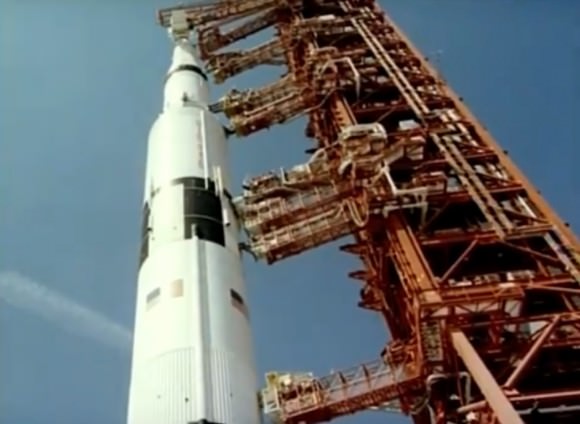
The Falcon Heavy boasts three Falcon 9 engine cores, each of which is made up of 9 Merlin rocket engines. Together, these engines generate more than 2.27 million kg (5 million pounds) of thrust at liftoff, which is the equivalent of approximately eighteen 747 aircraft. Its lift capacity is also equivalent to the weight of a fully loaded 737 jetliner, complete with passengers, crew, luggage and fuel.
The Saturn V rocket – the workhorse of the Apollo Program, and which made its last flight in 1973 – is only American rocket able to deliver more payload into orbit. This is not surprising, seeing as how the Falcon Heavy was specifically designed for a new era of space exploration, one that will see humans return to the Moon, go to Mars, and eventually explore the outer Solar System.
Fingers crossed that everything works out and the Falcon Heavy proves equal to the enterprise. The year of 2024 is coming fast and many of us are eager to see boots being put to red soil! And be sure to enjoy this animation of the Falcon Heavy in flight:
Further Reading: Orlando Sentinel
Saturn V’s New Mission Is To…Mississippi?
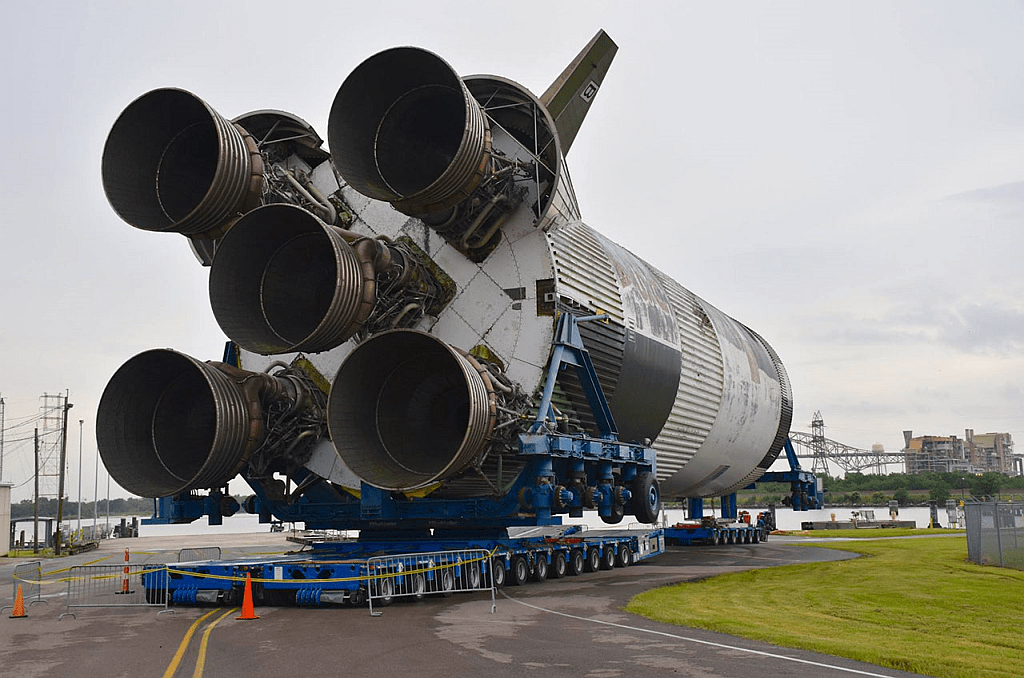
Tourist attractions can be pretty hokey. In the part of Canada where I’m from, one town boasts the “largest hockey stick in the world.” I’m not kidding. You can see it when you drive by. But Mississippi is getting what may be one of the world’s greatest tourist attractions: a Saturn V rocket, or the first stage of one, anyways.
Obviously, this is more than just a tourist attraction. This is an historic science exhibit of epic proportions. This Saturn V is the rocket that was supposed to launch Apollo 19 to the Moon in 1973, until that trip was cancelled.
For 38 years, this Saturn V has been at its home at NASA’s Michoud Assembly Facility in New Orleans, where it was built more than 40 years ago. But now, it’s found a new home at the Stennis Space Center, about 77 km. (48 miles) away. And getting there is quite a journey.
The heart of this journey is a 64 km. (40 mile) trip through the Intercoastal Waterway, and up the Pearl River. Not only that, but it had to be loaded onto a barge to start the trip, and unloaded once it arrived.
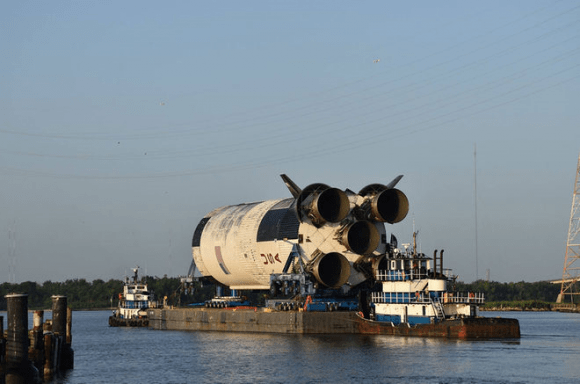
The actual home of the Saturn V will be the Infinity Science Center, which is a non-profit science outreach organization that has partnered with NASA, and is located next to the Stennis Space Center in Mississippi. And people there are proud and excited to be a part of this.
“There’s a saying that if you wanted to get to the moon, you had to go through south Mississippi first,” said John Wilson, executive director for INFINITY Science Center. “Our goal with this Saturn V first stage exhibit is to educate our guests on our region’s critical role in space exploration and bring to life the ingenuity of the men and women who built, transported, tested and flew the machines that took us to worlds beyond our own.”
There’s a lot of history behind the Saturn V. It was developed to support NASA’s Apollo program to land men on the Moon. The Saturn V was launched 13 times between 1966 and 1973. It still retains its status as the world’s most powerful rocket, though its end will reign soon, thanks to NASA’s Space Launch System (SLS) and SpaceX’s Falcon Heavy.
This Saturn V was supposed to carry Apollo 19 on its way to the Moon until that missions was cancelled. One of the would-be crew members of Apollo 19, Fred Haise, was also a crew member on the ill-fated Apollo 13. Fred Haise is now on the Board of Directors at the Saturn’s new home, the Infinity Science Center. I can’t imagine how pleased he is to have his Saturn V coming home.
The Saturn V is a three stage rocket. The section being moved and exhibited is the first stage, known as the S-IC. It’s 42 meters (138 ft.) long and 10 meters (33 ft.) in diameter. This first stage had five massive F-1 engines which produced more than 7.5 million pounds of thrust.
The engines combined and burned liquid oxygen and kerosene for about 2.5 minutes. At that point, the rocket would be 61 km (38 miles) above Earth. Then, empty of fuel and with its job done, it would fall back towards Earth and burn up. But this one was built before its mission was cancelled, which is why its available for display.
The Infinity Science Center has 72,000 square feet of space, and has over 50 years of NASA history on display. Over 65,000 guests visit each year. That number is sure to rise, once the Saturn V comes home.
Artificial Object in Trans-lunar Orbit to Impact Earth on November 13
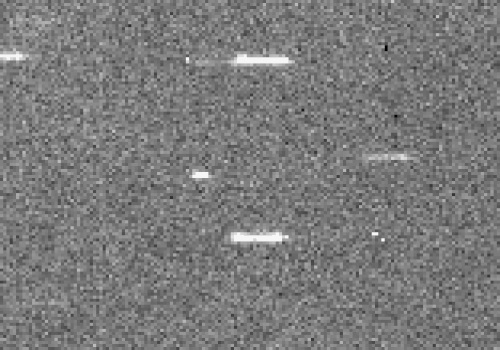
Get ready for a man-made fireball. A object discovered by the Catalina Sky Survey on Oct 3rd temporarily designated WT1190F is predicted to impact the Earth about 60 miles (100 km) off the southern coast of Sri Lanka around 6:20 Universal Time (12:20 a.m CST) on November 13.
The object orbits Earth with a period of about three weeks. Because it was also observed twice in 2013 by the same survey team, astronomers have the data they need to model its orbit and trajectory, and as far anyone can tell, it’s likely man-made.
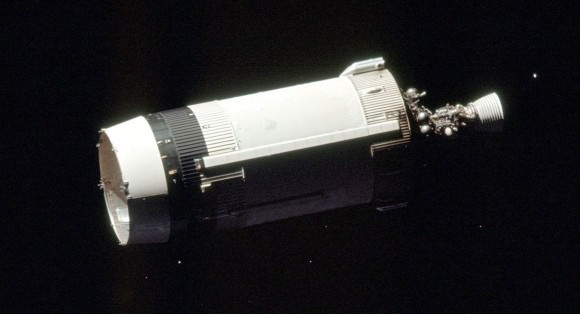
Solar radiation pressure, the physical “push” exerted by photons of sunlight, is proportional to a space object’s area-to-mass ratio. Small, lightweight objects get pushed around more easily than heavier, denser ones. Taking that factor into account in examining WT1190F’s motion over two years, the survey team has indirectly measured WT1190F’s density at about 10% that of water. This is too low to be a typical asteroid made of rock, but a good fit with a hollow shell, possibly the upper stage of a rocket.
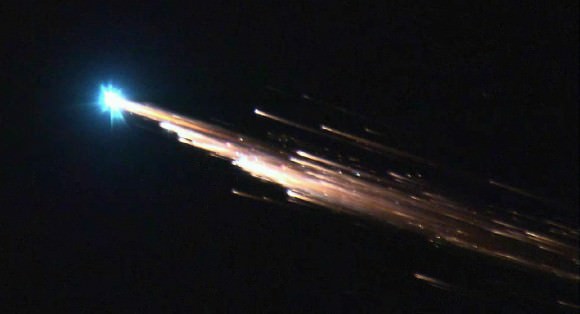
It’s also quite small, at most only about six feet or a couple of meters in diameter. Most or all of it is likely to burn up upon re-entry, creating a spectacular show for anyone near the scene. During the next week and a half, the European Space Agency’s NEO (Near-Earth Object) Coordination Center is organizing observing campaigns to collect as much data as possible on the object, according to a posting on their website. The agency has two goals: to better understand satellite re-entries from high orbits and to use the opportunity to test our readiness for a possible future event involving a real asteroid. The latter happened once before when 2008 TC3 (a real asteroid) was spotted on October 6, 2008 and predicted to strike Earth the very next day. Incredibly, it did and peppered the Sudan with meteorites that were later recovered.
Assuming WT1190F is artificial, its trans-lunar orbit (orbit that carries it beyond the Moon) hints at several possibilities. Third stages from the Saturn-V rockets that launched the Apollo missions to the Moon are still out there. It could also be a stage from one of the old Russian or more recent Chinese lunar missions. Even rockets used to give interplanetary probes a final push are game.
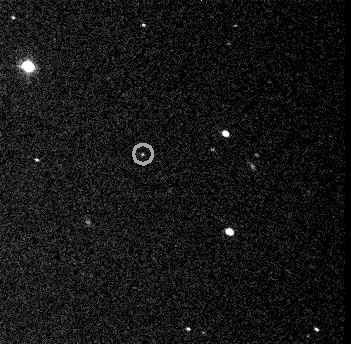
Case in point. What was thought initially to be a new asteroid discovered by amateur astronomer Bill Yeung on September 3, 2002 proved a much better fit with an Apollo 12 S-IVB (third) stage after University of Arizona astronomers found that spectra taken of the object strongly correlated with absorption features seen in a combination of man-made materials including white paint, black paint, and aluminum, all consistent with Saturn V rockets.
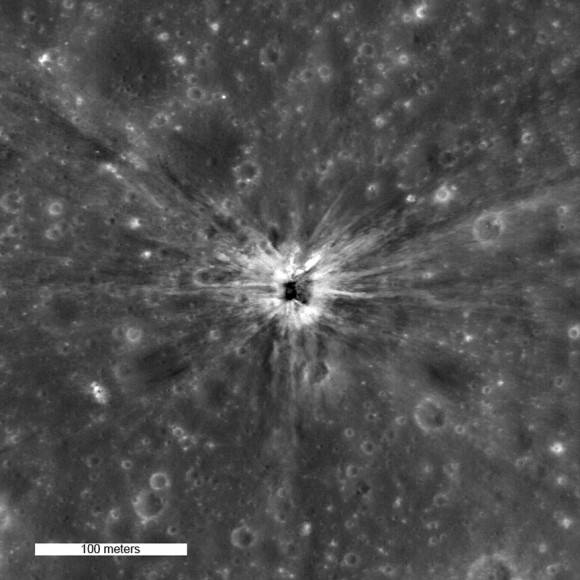
Apollo 13’s booster was the first deliberately crashed into the Moon, where it blew out it a crisp, 98-foot-wide (30-meter) crater. Why do such a crazy thing? What better way to test the seismometers left by the Apollo 12 crew? All subsequent boosters ended their lives similarly in the name of seismography. Third stages from earlier missions — Apollos 8, 10 and 11 — entered orbit around the Sun, while Apollo 12, which is orbiting Earth, briefly masqueraded as asteroid J002E3.
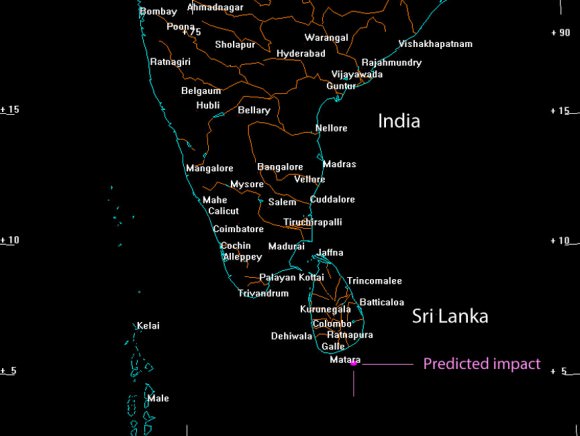
Bill Gray at Project Pluto has a page up about the November 13 impact of WT1190F with more information. Satellite and asteroid watchers are hoping to track the object before and right up until it burns up in the atmosphere. Currently, it’s extremely faint and moving eastward in Orion. You can click HERE for an ephemeris giving its position at the JPL Horizons site. How exciting if we could see whatever’s coming down before its demise on Friday the 13th!
Apollo 11 Splashdown 45 Years Ago on July 24, 1969 Concludes 1st Moon Landing Mission – Gallery
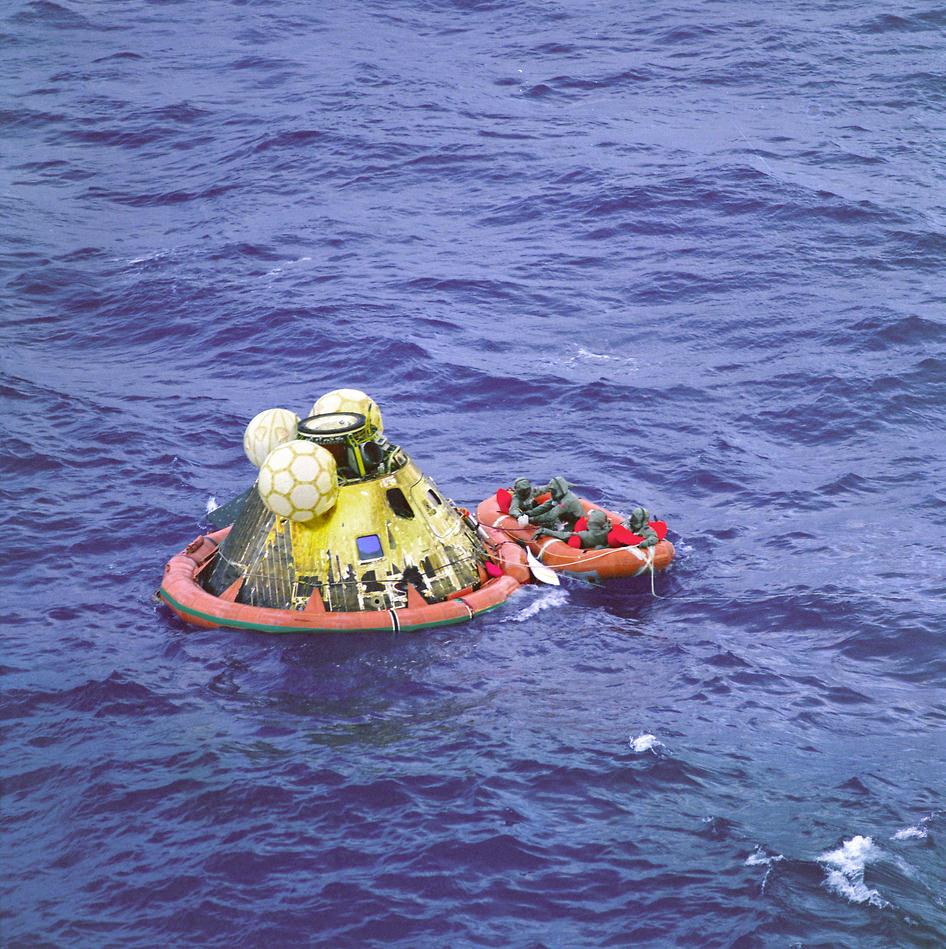
Apollo 11 Comes Home
The Apollo 11 crew await pickup by a helicopter from the USS Hornet, prime recovery ship for the historic lunar landing mission. The fourth man in the life raft is a United States Navy underwater demolition team swimmer. All four men are wearing biological isolation garments. They splashed down at 12:49 a.m. EDT, July 24, 1969, about 812 nautical miles southwest of Hawaii and only 12 nautical miles from the USS Hornet. Credit: NASA
Story and gallery expanded[/caption]
The three man crew of NASA’s Apollo 11 splashed down in the Pacific Ocean 45 years ago today on July 24, 1969 – successfully concluding Earth’s first journey to land humans on another world and return them safely to our Home Planet.
Apollo 11 Commander Neil Armstrong became the first human to set foot on the Moon on July 20, 1969 after he stepped off the footpad of the Lunar Module Eagle soon after the start of the moonwalk EVA at 10:39 p.m. EDT and onto the lunar surface with his left foot at the Sea of Tranquility at 10:56 p.m. EDT. Lunar Module (LM) pilot Buzz Aldrin followed soon thereafter. They came in peace for all mankind!
The magnificent Lunar landing feat accomplished by US Apollo 11 astronauts Neil Armstrong and Buzz Aldrin marks the pinnacle of Mankind’s most momentous achievement.
The Apollo 11 crew consisting of Neil Armstrong, Buzz Aldrin and Command module pilot Michael Collins splashed down safely at 12:50 p.m. EDT on July 24 about 900 miles southwest of Hawaii in the North Pacific Ocean while seated inside the Command Module Columbia dangling at the end of a trio of massive parachutes that slowed their descent through the Earth’s atmosphere.

After a mission duration of 8 days, 3 hours, 18 minutes, 35 seconds from launch to landing the Apollo 11 crew were plucked from the ocean by helicopters from the USS Hornet recovery ship after splashdown only 12 nautical miles (24 km) away.
They had to don protective biological isolation garments (BIGs) in case they were infected by some unknown and potentially hazardous “moon germs.” Of course there were no pathogens, but this was not definitely known at the time.
After their return to Earth, the trio was scrubbed with a disinfect solution of sodium hypochlorite and had to remain in quarantine for 21 days inside a 30 feet (9.1 m) long quarantine facility known as the Lunar Receiving Laboratory (LRL).
They were welcomed back to Earth by President Nixon aboard the USS Hornet.
We’ve chronicled the journey of Apollo 11 and lunar touchdown on July 20, 1969 as well as this week’s renaming of a historic human spaceflight facility at the Kennedy Space Center in honor of Mission Commander Neil Armstrong.
Armstrong passed away at age 82 on August 25, 2012 due to complications from heart bypass surgery. Read my prior tribute articles: here and here
Here we’ve collected a gallery of the mission and ocean splashdown that brought Apollo 11 to a close and fulfilled the lunar landing quest set by a young President John F. Kennedy early in the decade of the 1960s.
The trio blasted off atop a 363 foot-tall Saturn V rocket from Launch Complex 39A on their bold, quarter of a million mile moon mission from the Kennedy Space Center , Florida on July 16, 1969.
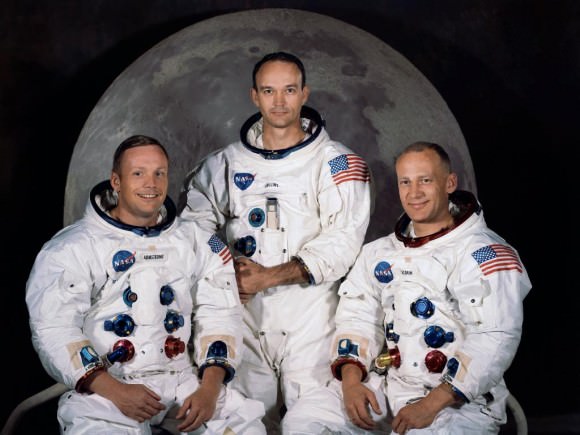
The three-stage Saturn V generated 7.5 million pounds of thrust and propelled the trio into space and immortality.
Read my story about the deep sea recovery of the Apollo 11 first stage F-1 engines in 2013 – here.
The crew arrived in lunar orbit three days later on July 19, 1969, inside the docked Apollo 11 Command/Service and Lunar Modules (CSM/LM).
Armstrong and Aldrin then moved into the Lunar Module, undocked and safely touched down at the Sea of Tranquility on the lunar surface on July 20, 1969 at 4:18 p.m EDT as hundreds of millions across the globe watched in awe.
Six hours later Armstrong climbed down the LM ladder and stepped onto the Moon and into immortality.
Armstrong’s first words:
“That’s one small step for [a] man, one giant leap for mankind.”
During their 2 ½ hour long moonwalk Armstrong and Aldrin unveiled a plaque on the side of the lunar module. Armstrong read the words;
“Here men from the planet Earth first set foot upon the moon. July 1969 A.D. We came in peace for all mankind.”
The duo collected about 50 pounds (22 kg) of priceless moon rocks and set out the first science experiments placed by humans on another world. The moon rocks were invaluable in informing us about the origin of the Earth – Moon system.
Here is NASA’s restored video of the Apollo 11 EVA on July 20, 1969:
Video Caption: Original Mission Video as aired in July 1969 depicting the Apollo 11 astronauts conducting several tasks during extravehicular activity (EVA) operations on the surface of the moon. The EVA lasted approximately 2.5 hours with all scientific activities being completed satisfactorily. The Apollo 11 EVA began at 10:39:33 p.m. EDT on July 20, 1969 when Astronaut Neil Armstrong emerged from the spacecraft first. While descending, he released the Modularized Equipment Stowage Assembly on the Lunar Module’s descent stage.
Altogether Armstrong and Aldrin spent about 21 hours on the moon’s surface. Then they said goodbye to the greatest adventure and fired up the LM ascent engine to rejoin Michael Collins circling above in the Apollo 11 Command Module.
“The whole world was together at that particular moment,” says NASA Administrator Charles Bolden in a CNN interview. “In spite of all we are going through there is hope!”
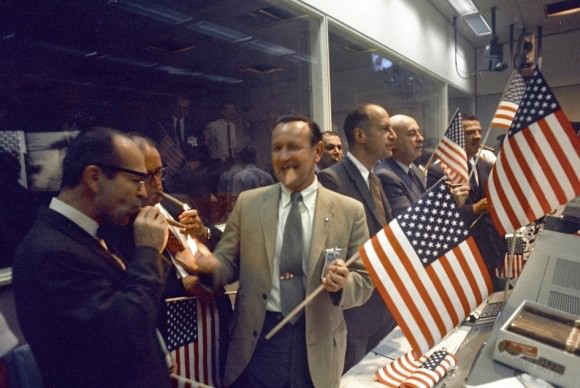
Stay tuned here for Ken’s Earth & Planetary science and human spaceflight news.

